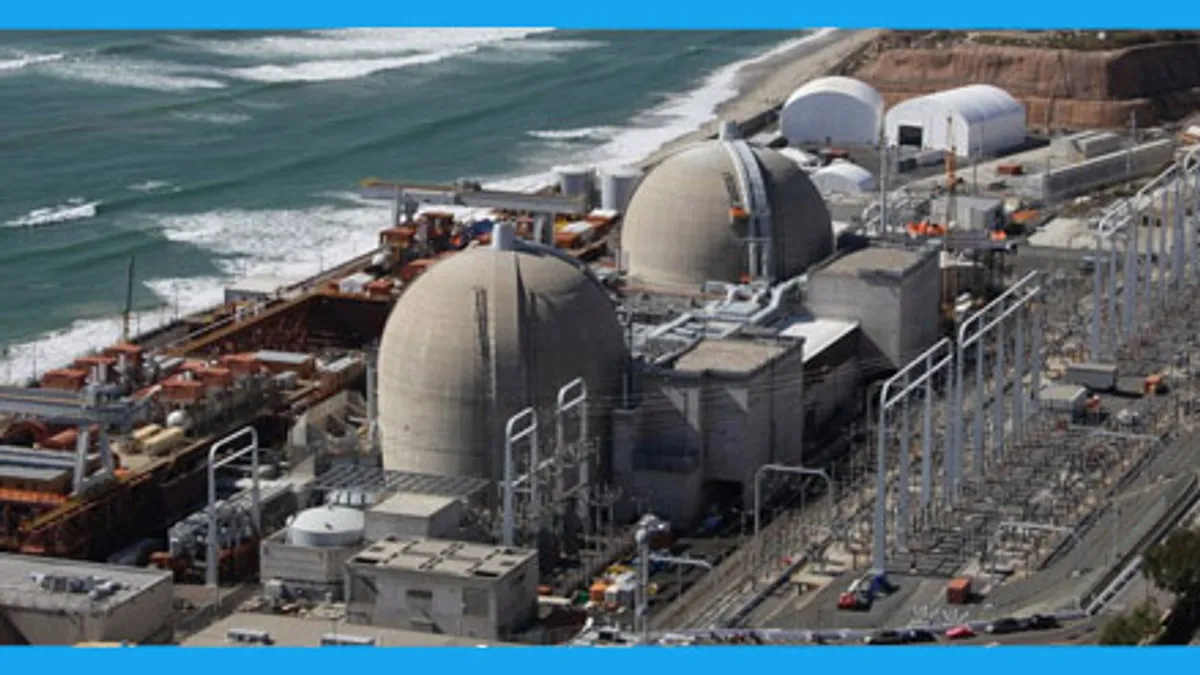Dive Brief:
- More rigorous NRC oversight of the 2009-2010 retrofits at the San Onofre Nuclear Generating Station might have prevented the problem with replacement steam generators (RSGs) that led to the facility’s permanent closure in 2013, according to a report from the Office of the Inspector General (OIG) of the Nuclear Regulatory Commission.
- San Onofre majority owner-operator Southern California Edison (SCE) installed the RSGs under the Title 10 Code of Federal Regulation 50.59 process, which allowed it to do the upgrade without the rigors of an operating license amendment. An unnamed former NRC deputy administrator associated with the process told the OIG that if the NRC had required the license amendment the fundamental flaw in the RSGs design might have been discovered.
- Like-for-like replacements of components at power reactors can be made under 10 CFR 50.59 without an NRC license amendment, but the NRC and SCE say the code also allows for "similar design" retrofits, like the one done on the steam generators at San Onofre by Mitsubishi Heavy Industries, to be done without the more rigorous requirements.
Dive Insight:
The replacement steam generators installed at San Onofre used alloy 690, a material more resistant to corrosion than the alloy 600 used in the original steam generators. But alloy 690 transfers about 10% less heat. The RSGs were therefore larger and had more tubes. The tubes eventually leaked and radioactive steam escaped.
SCE, minority owner San Diego Gas & Electric, and consumer advocates The Utility Reform Network, the Office of Ratepayer Advocates, Friends of the Earth, and the Coalition of California Utility Employees recently agreed to a settlement on the allocation of costs for the closure, which will cost the utilites more than $1.4 billion.














